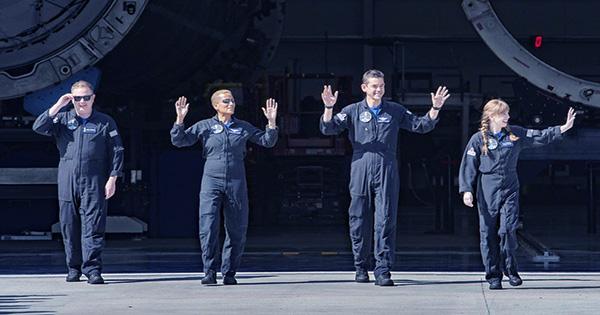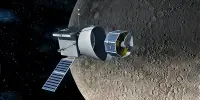After a historic three-day space adventure, the four members of the Inspiration4 crew have safely returned to Earth. The mission set a number of records and firsts, including being the first voyage to orbit without a single professional astronaut on board.
The crew – physician assistant Hayley Arceneaux, data engineer Christopher Sembroski, geology professor Dr. Sian Proctor, and Jared Isaacman, the billionaire entrepreneur who funded the trip – splashed down in the Atlantic just off the coast of Florida on Saturday, September 18 at 7 p.m. local time in the SpaceX Crew Dragon Capsule.
As the spaceship approached, SpaceX Mission Control radioed, “Your mission has showed the world that space is for all of us.” “It’s been a wild ride for us, and we’re only getting started,” Isaacman replied. The crew spent the time doing medical tests and gathering health data about themselves, in addition to generating money and publicity for St. Jude Children’s Research Hospital, the humanitarian cause at the core of this trip. Because they haven’t gone through the rigorous training that professional astronauts go through, there may be some fascinating insights on the effects of their brief trip to space on their bodies.
Inspiration4 has raised more than $200 million for St. Jude Children’s Research Hospital, a pediatric treatment and research facility that specializes in children’s leukemia and other malignancies. Isaacman contributed $100 million, while Elon Musk, the CEO of SpaceX, contributed $50 million, bringing the total to $1 billion. Arceneaux was treated for bone cancer there as a child and now works as a medical assistant there. “I was a small girl going through cancer treatment just like a lot of you, and if I can do it, so can you,” Arceneaux said from space to St. Jude patients.
While in space, the crew received calls from Tom Cruise, who is flying to space on his own SpaceX mission to film a film aboard the International Space Station (ISS) in October, and Bono, the lead singer of the Irish rock band U2.
So yet, there haven’t been many details or footage of life aboard the capsule while they were in orbit. According to Issacman, this is owing to the limited number of ground station passes available for video transmission. “Priority will be given to NASA and other government users. I expect a large amount of footage to be released soon. We had a number of cameras onboard “He sent out a tweet.
Not only was this the first journey to orbit made up entirely of amateur astronauts, but it also set a number of other milestones. Dr. Sian Proctor is the first-ever Black female spacecraft pilot, and Arceneaux is the youngest American and the first person with a prosthesis to journey to space at the age of 29. Both Arceneaux’s and Proctor’s firsts open the path for more accessible and inclusive space travel. The Crew Dragon capsule orbited the Earth at a higher height than the International Space Station (ISS), at 585 kilometers (363 miles), more than 160 kilometers (100 miles) higher than the space station, and even Hubble.













